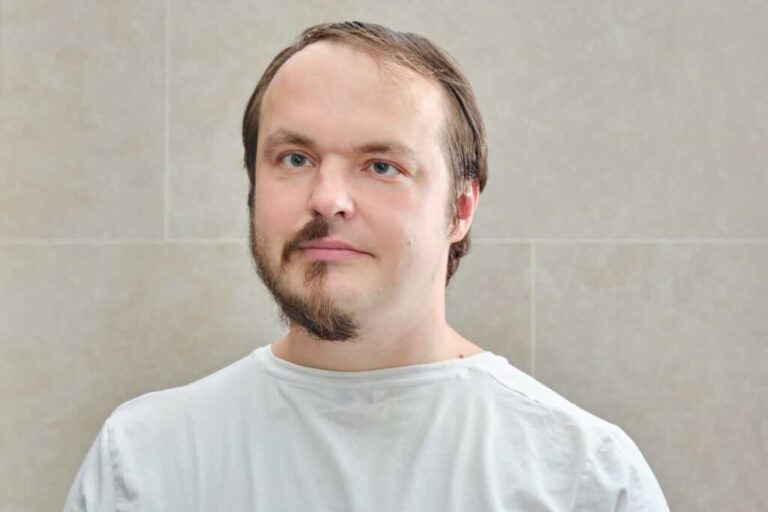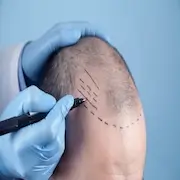Revitalize Your Look with a Beard Transplant in Chicago
Some men just can not grow a thick, natural-looking beard which shatters their confidence. Often, thinning of hair in the facial can not be fixed with beard oils and home remedies. Considering a beard transplant in Chicago? To replace patchy facial hair with a healthy-looking beard.
Not sure where to get the best beard transplant? It is hard to find a better hair restoration destination in Chicago. Beard transplant Chicago has a lot to offer to male patients, allowing them to achieve natural-looking fullness and enjoy the aesthetic benefits of a thick beard.
Beard Transplant In Chicago
Clinics in Chicago are equipped with state-of-the-art hair transplant technology to maximize the chances of successful hair and beard restoration. Additionally, board-certified hair transplant surgeons with elite training in advanced, minimally invasive surgical techniques provide desirable, long-term results.
The best hair transplant clinics in Chicago help you achieve a bolder, more masculine look. If you are transitioning, experiencing patchiness, or simply cannot grow a beard, book an appointment now at a reputable center in Chicago to regrow hair in the facial. In Chicago, surgeons with unrivaled expertise in beard transplant carry out the procedure with extreme care.

Pre-Op Assessment
Not everyone can be an excellent candidate for a beard transplant or achieve the results they desire. The best candidate for hair loss are the following
- People with sparse hair growth and patchy beard
- Hair loss due to scarring, burns, injuries, acne, or any surgery
The success of the hair transplant is heavily dependent on accurate preoperative evaluation. During the first consultation, the doctor determines the number of hair follicles required.
The hair transplant surgeon draws a design in the recipient’s beard area and divides the facial area into different zones. Moving forward, the number of grafts is calculated to be implanted in the upper lip, chin region, genian area, and sideburns.
Next, the follicular density is determined depending on the area to fill in. The quantity of follicular units is decided considering the following factors.
- End results that patients want to achieve
- Size of the recipient area
- Hair density per square centimeter
- The number of hair follicles to be transplanted per centimeter
- The amount of existing hair in the beard area
- The number of grafts that can be extracted from the donor site
Often, multiple follow-up procedures are required to meet the expectations of the patient. The donor and recipient area needs to be in good condition to extract and implant grafts. The surgeon should inform the patient about the risks, complications, and expected results.
Donor Area
The occipital and lateral regions of the scalp have a sufficient amount of healthy, high-quality follicles for transplant. Scalp hair is thicker than other areas of the body. The hair transplant surgeon often considers the thickness of grafts and hair shafts for a natural-looking appearance.
Surgery
On the big day, the final design is drawn on the area to be grafted. The surgery has two major stages; extraction grafts and implanting grafts.
- Extracting Follicles – This is a crucial stage of the surgery that influences the success of the treatment. There are two ways to extract follicles; using the FUE or FUT method.
- FUE – This efficient yet time-consuming technique involves extracting FUE individually from the donor area using a micro punch tool.
- FUT – In FUT, follicular units are dissected from a strip of skin, leaving a linear scar.
- Implanting Follicles – The preexisting beard needs to be trimmed to 3-5mm to clearly see the area to be grafted. Similar to extraction, two techniques are used for implanting grafts
- Forceps – Otherwise known as the stick and place method, each graft is held gently and implanted in the pre-made incision with extreme care to not damage the bulb.
- Implanters – Dull and Sharp implanters are used to insert grafts into the skin. Dull implanters implant grafts into the incisions. Contrarily, sharp implanters make incisions and insert the graft into the skin.
Aftercare
Subsequent care contributes to the success and failure of the beard transplant. Patients should not touch the donor and recipient area excessively and follow the doctor’s instructions to get the long-lasting results you are after.

Risks
Surgical beard restoration is not without risks and complications. During the first consultation, the patient should be made aware of the complications associated with a beard transplant.
- Hyperpigmentation – Post-inflammatory hyperpigmentation in the recipient area is one of the side effects of the surgery. Luckily, it can be easily treated with a depigmentation treatment.
- Incorrect Placement – Not accurately calculating the angles before the surgery or implanting grafts in the opposite direction would lead to an unnatural appearance.
- Infections – It is rare to develop an infection, however, not impossible. Nowadays, the chances of developing an infection are lower with efficient implantation techniques.
Why Chicago?
Hair transplant surgeons in Chicago have refined artistry and expertise to help patients achieve their cosmetic goals. Hair transplant centers in Chicago have advanced non-surgical treatments, for instance, PRP to enhance the results of the facial hair transplant. Experienced surgeons perform custom-tailored beard transplants depending on the needs of the patients to restore masculine appearance.




